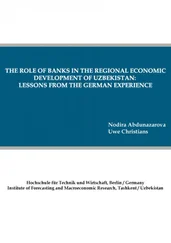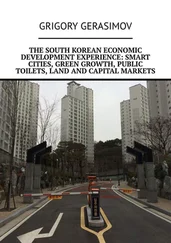Predominance of manufactures in the industry of developed countries makes a special analysis of the dynamics of the working time fund in this sector of the economy reasonable.
The Dynamics of Expenditures of Labour in Manufacturing Industries of Economically Developed Countries
First of all, let us analyze such the dynamics at a long time interval.
The data at table 1 show regular reduction of the working time fund in the material production sphere in most presented countries since the second half of the 20 thcentury. Undoubtedly, the countries being analyzed differ according to the level of economic development what confirms universality of this tendency’s modification.
At the same time tempos of decreasing in general expenditures of labour in manufacturing industries are not the same in different countries.
Table 1
Tempos of Changing in the Working Time Fund Index in Manufacturing Industries in Several Countries, % [21] , [22]
 [23]
[23]
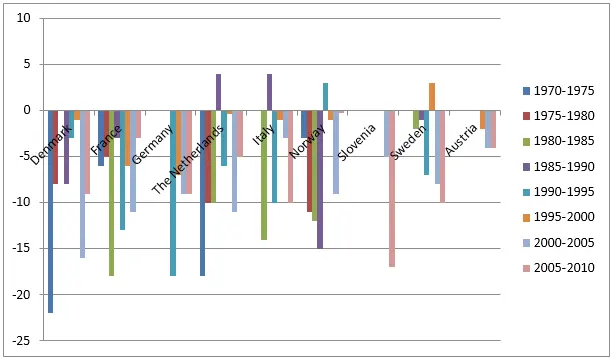
Figure 1. The labour expenditures dynamics in manufacturing industries in several countries for the period 1970-2010.
As it follows from the data at figure 1, the highest tempos of decreasing in the analyzed index are in Denmark, France, Germany, the Netherlands, Italy, Norway, Slovenia. General expenditures of labour in Sweden and Austria reduce quite stably.
The content of figure 2 shows that in Finland, Estonia, Greece the tendency of decreasing in general labour expenditures in manufacturing industries is seen too, though it is not so consistently as it is in the countries shown in figure 1.
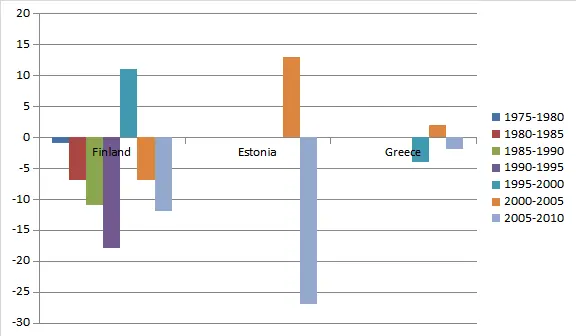
Figure 2. The labour expenditures dynamics in manufacturing industries in several countries for the period 1975-2010.
It is essential that among leaders in labour expenditures reduction in manufacturing industries there are countries – Germany, France – in which the absolute value of the working time fund in this sector many times exceeded the similar index of the countries where these tempos were lower. Taking into consideration internalization of the modern economy, the tendency additionally confirms the regularity of decreasing in costs in material production.
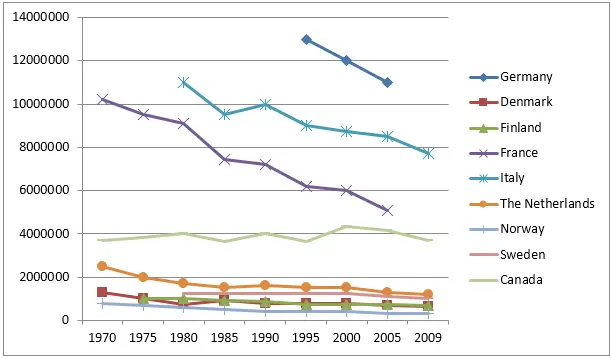
Figure 3. The labour expenditures level in manufacturing industries in several countries of the OECD in 1970-2009.
The tendency for decreasing in general labour expenditures, as in relative so in absolute terms, is seen not only in a long-term period but for the last 10-15 years, the data at figures 4 and 5 show it.
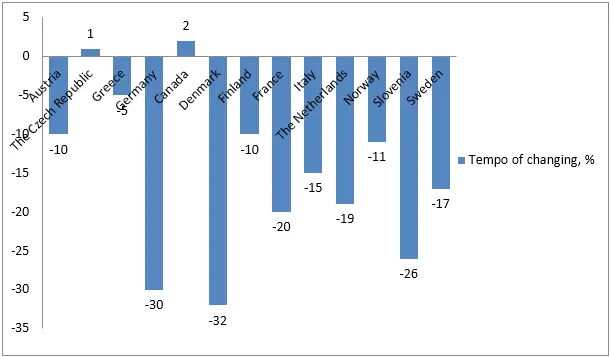
Figure 4. The labour expenditures dynamics in manufacturing industries in several countries for the period 1995-2009.
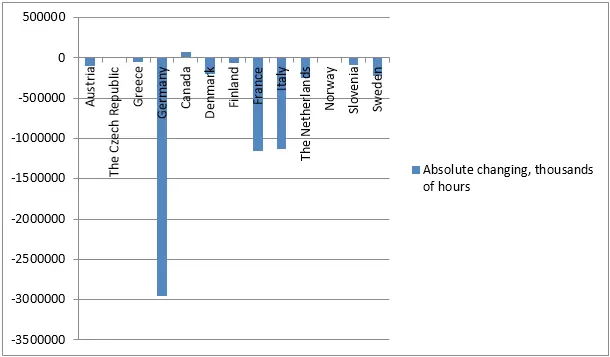
Figure 5. Changing in labour expenditures in manufacturing industries for the period 1995-2009 (in absolute terms).
Reduction of time of labour expenditures specifically reflects in decreasing in a part of labour in value added that is produced in industry. As M. Lawless and K. Whelan mark there is decreasing in a part of labour in almost all the countries of the EU-15 – by 4.6% for the period 1980-2010. According to calculations of the researches even if there was no changing in the economic structure, that decrease would take place anyway, though the tempo would be lower – by about 3.63% [24]. But one should not fully identify the dynamics of working time and dynamics of the part of wages in value added.
According to our calculations based on the data of the Eurostat, for the period 2000-2013 general expenditures of labour in the analyzed sector of industry decreased in Belgium (about 15%), Bulgaria (more than 15%), the Czech Republic (about 12%), Denmark (more than 50% since 1995), Ireland (about 30%), Spain (more than 30%), Croatia (more than 15%), Luxembourg (about 10%), the Netherlands (more than 20%), Poland (7%), Portugal (a bit less than 50%), Slovakia (about 13%), Finland (about 30%), Rumania (about 50%), Norway (about 10%), Cyprus (about 20%), and Malta (more than 90%) [25]. For the period among countries of Europe there was no decreasing in general labour expenditures only in Turkey.
The tendency for decreasing in the working time fund in manufacturing industries was seen even after the latest economic crisis. So, since 2010 till 2013 this fund decreased in Spain by 14%, in Croatia by 10.9%, in Italy by 6.55%, in Portugal by 5.8%, in France by 3.83%, in Bulgaria by 3.3%, in the Netherlands by 3.26%, in Denmark by 2.76%, in Finland by 1.75% [26].
Of course, the effect of this tendency is not restricted with Europe. Its universal modification is confirmed by the experience of the USA where the working time fund value in this sphere decreased by 19.6% [27]. For the period 1995-2000 in South Korea the general quantity of working hours in manufacturing industries per year decreased by 13%, and for 2002-2007 it decreased by 9.9% more [28].
Taking into consideration the difference in tempos of decreasing in the general working time fund, the following classification of economically developed countries is regular.
Table 2
The Classification of Countries, Depending on the Dynamics of the Working Time Fund in Manufacturing Industries
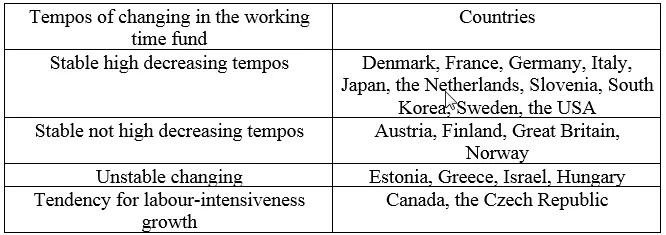
As economically developed countries with the most large-scale output volume are included in the group with high tempos of general working time fund reduction, so it confirms the regular modification of this tendency. Exclusions represented by the dynamics of such an index in Canada and the Czech Republic certainly do not refute the noted regularity. Meanwhile, the total output volume of manufacturing industries in economically developed countries forms a predominant part of world’s production in this key sector of industry. Consequently, the main part of the world industrial product is produced in conditions of reduction of total labour expenditures for its output.
Once again, all of it confirms existence of the economic regularity of absolute reduction of the social production labour fund.
This reduction is one of the forms of increasing in labour productivity. This form is realized in combination with increasing in total output ensuring satisfaction of growing material needs of members of the society what table 3 shows.
Table 3
Tempos of Changing in Real Output Volume in Manufacturing Industries, % [29]
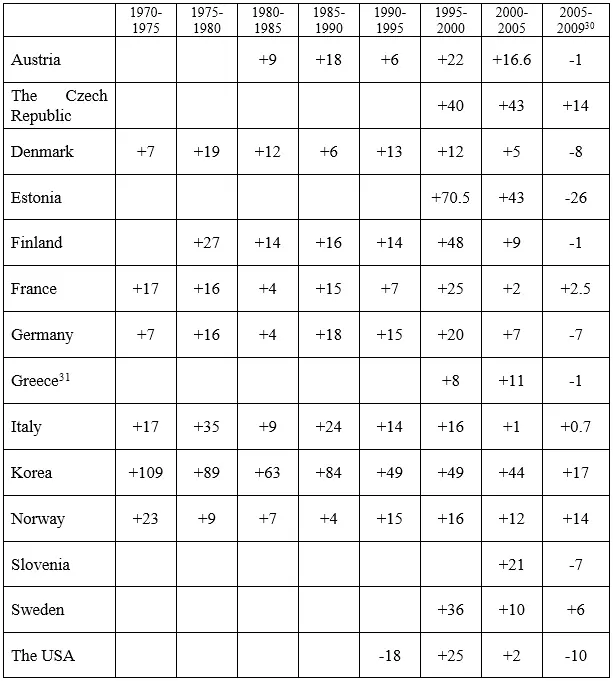 [30] [31]
[30] [31]
For the period 1995-2010 the output volume in manufacturing industry also increased in Hungary by 63.7%, in Israel by 37.8%, in the Netherlands by 22.3 [32]%. Some decreasing in the output volume in particular countries for the period 2005-2009 is explained by a negative influence of the world economic crisis.
Читать дальше
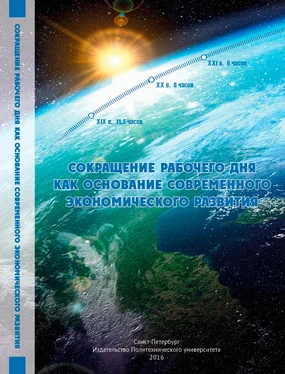
 [23]
[23]





 [30] [31]
[30] [31]
